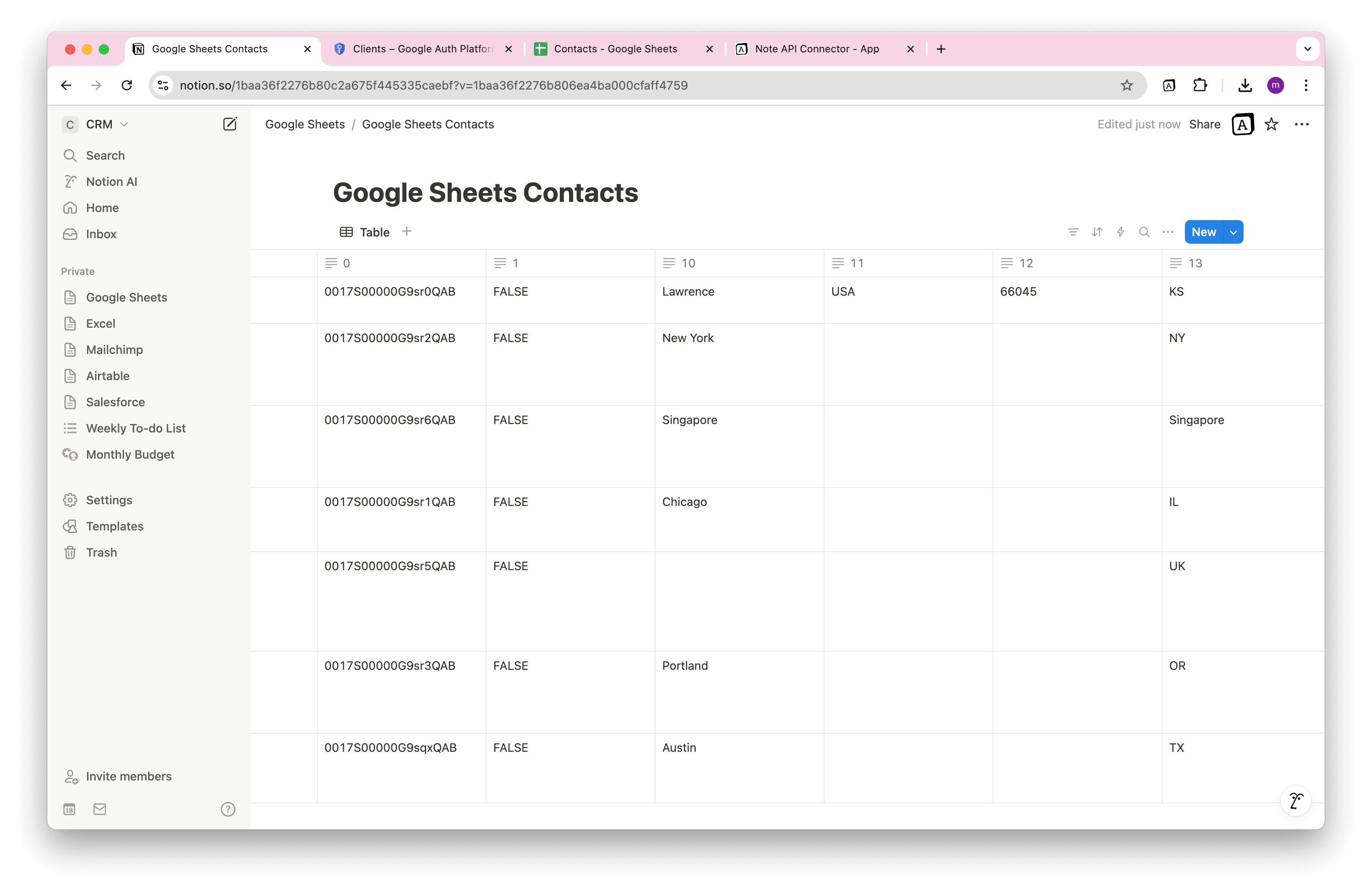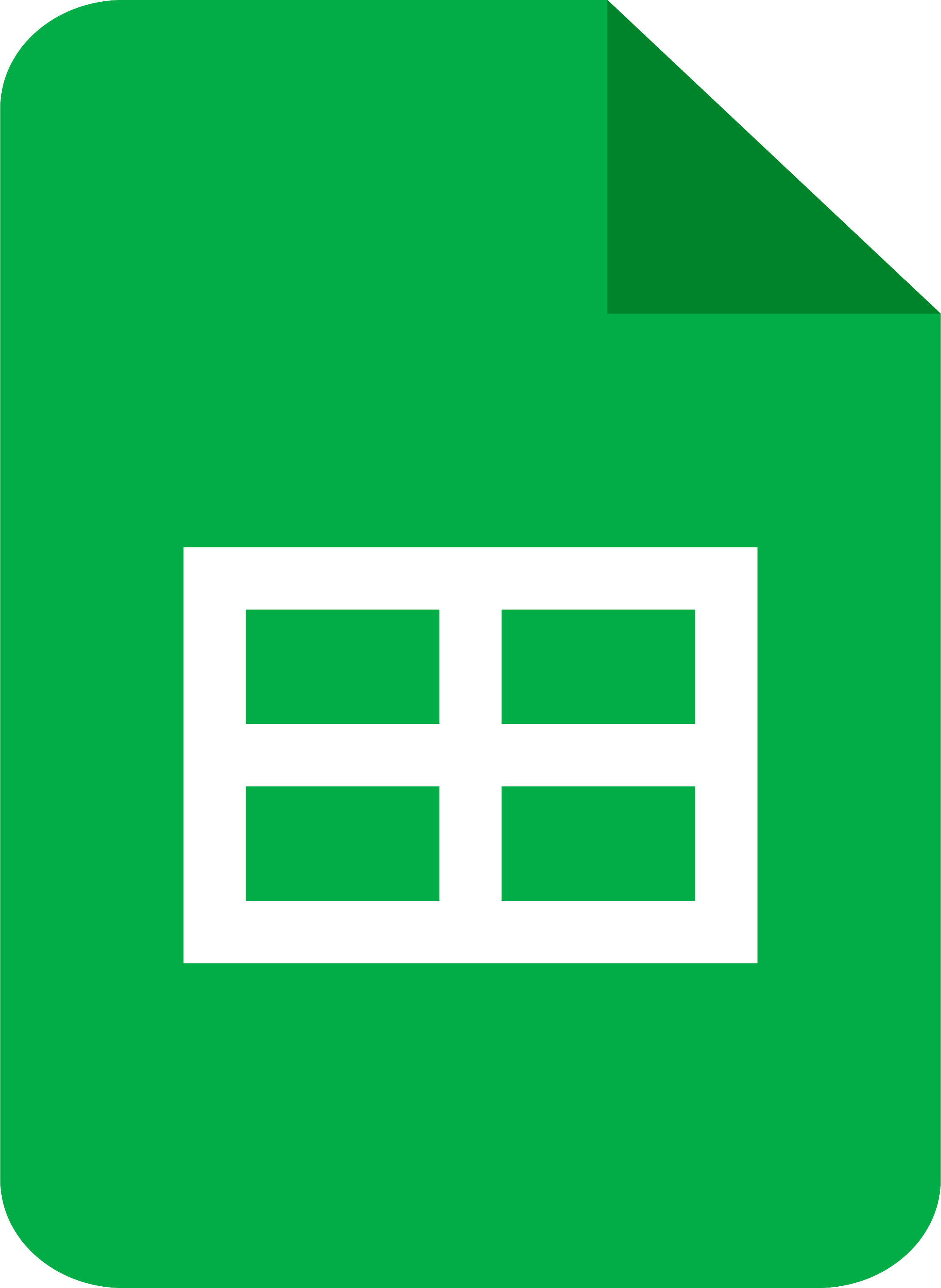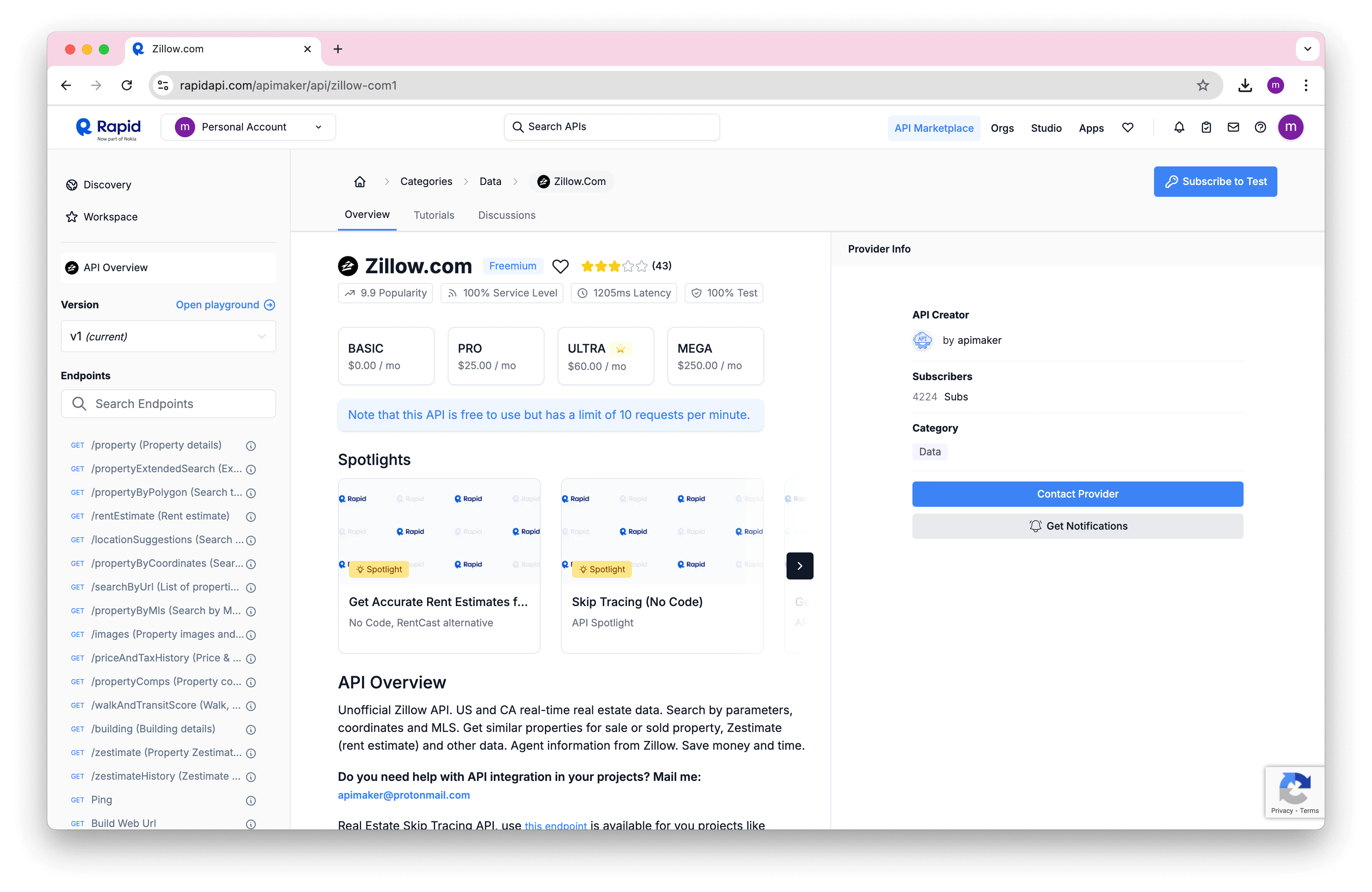How to Import API Data into Notion With Note API Connector [RapidAPI]
Notion is a powerful tool for organizing workflows, but its capabilities grow exponentially when paired with APIs. In this guide, I'll show you how to import API data into Notion using the Note API Connector. By connecting APIs through RapidAPI, you can tap into thousands of data sources and seamlessly integrate them into your Notion workspace.
As an example, I'll demonstrate how to import balance sheet data into Notion. However, the process works for any API available on RapidAPI, so you can adapt it to your specific needs.
What is RapidAPI?
RapidAPI is the largest API marketplace, offering access to over 40,000 APIs across diverse categories, such as:
- Machine Learning: APIs for AI tools like image recognition or language processing
- Finance: Stock market data, balance sheets, or cryptocurrency rates
- Sports: Game statistics, live scores, and player data
- Utilities: Weather updates, geolocation, or translation services.
For instance, if you need structured web scraping data, you could use the HasData Web Scraping API, which makes it easy to collect and integrate website content into Notion.
RapidAPI simplifies finding and integrating APIs by providing a central hub where you can test, subscribe, and manage APIs effortlessly.
For this tutorial, I'll focus on APIs that provide balance sheet data, but the same process applies to any other type of API available on the platform.
Subscribe to RapidAPI
Visit RapidAPI and sign up for free. Once you’re logged in, explore the API hub .
In the search bar, enter keywords related to the data you want. For this guide, I searched for
balance sheet
.
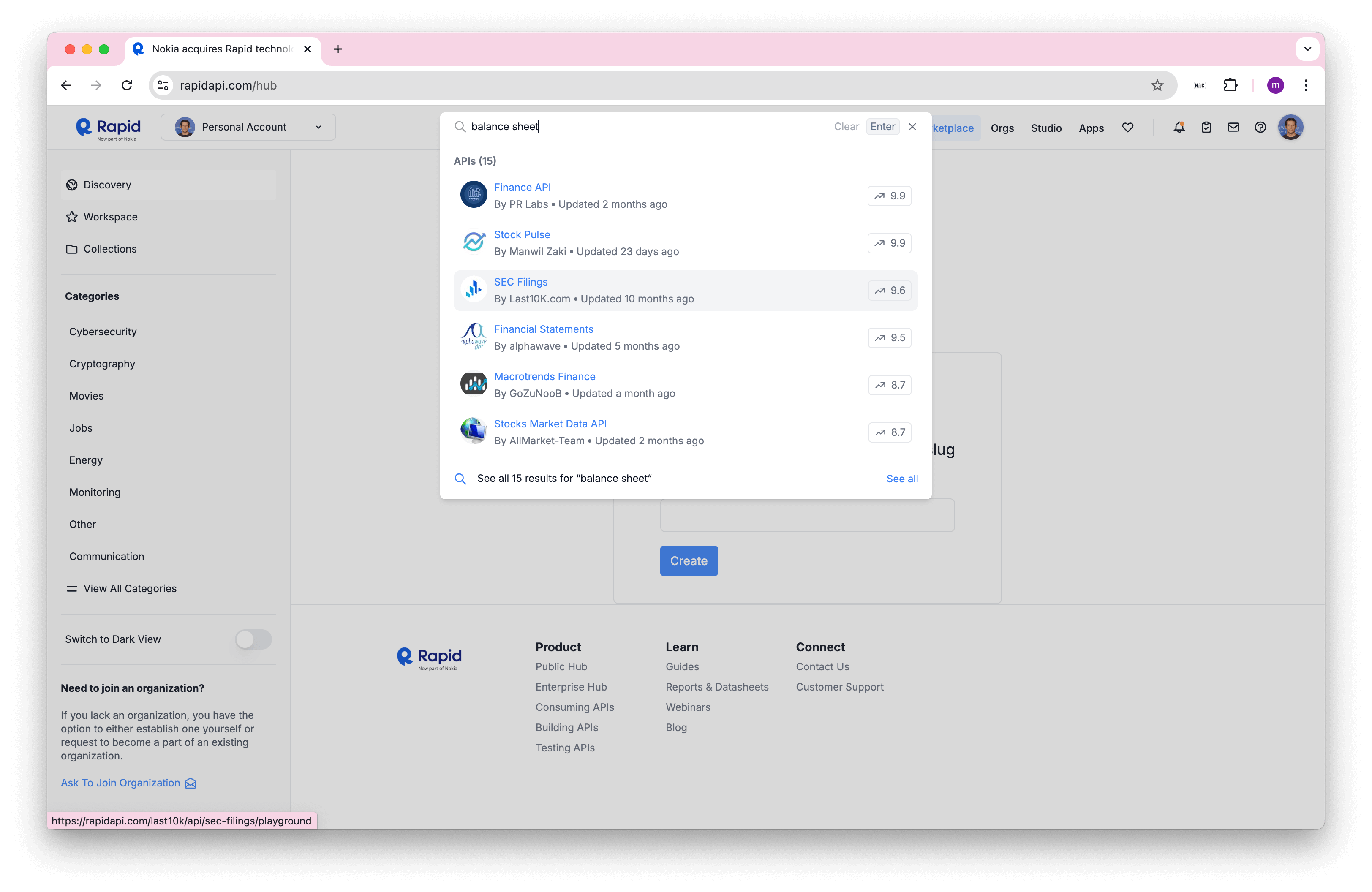
I selected the SEC Filings API, which offers free access to 25 requests per month.
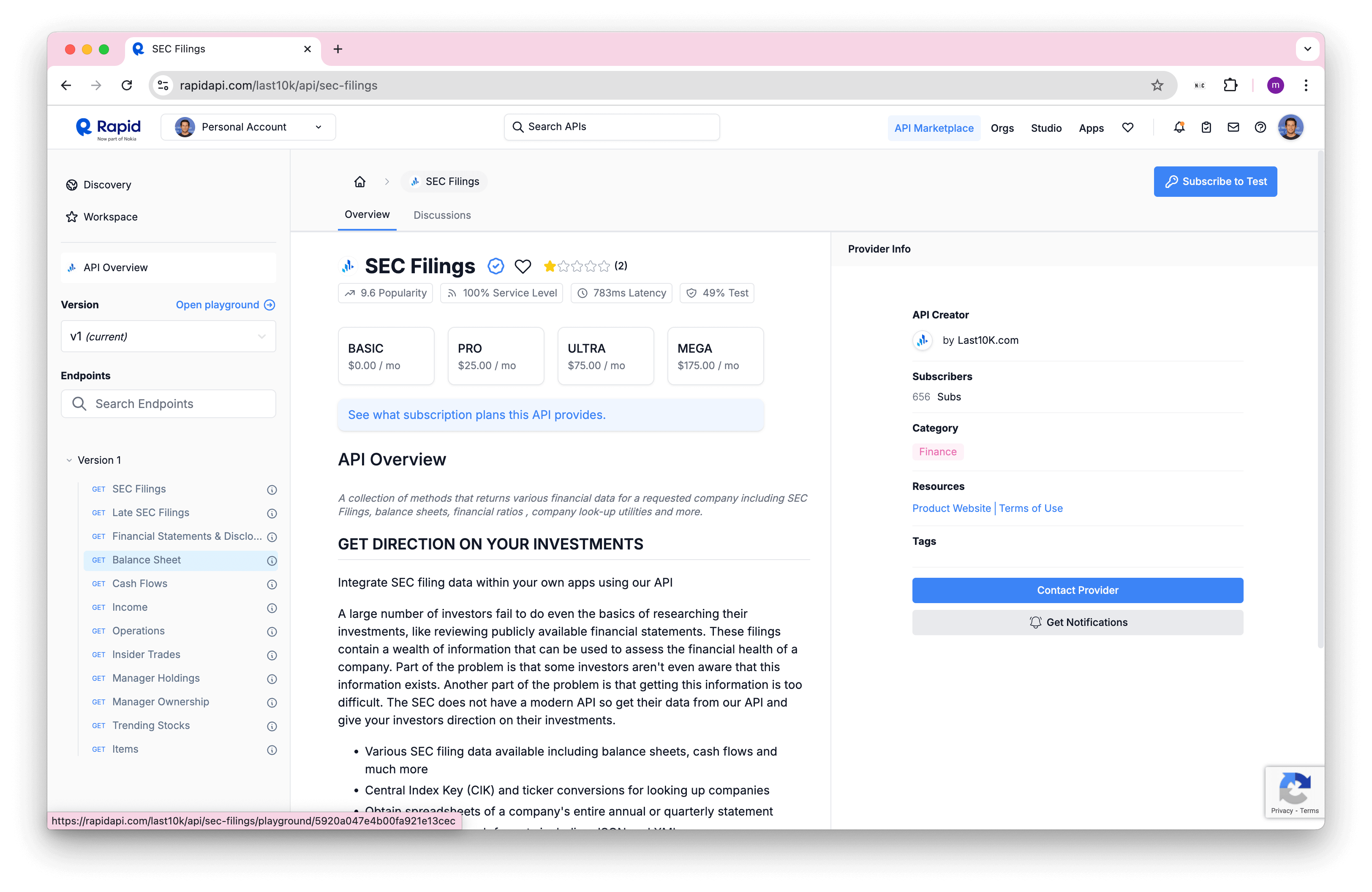
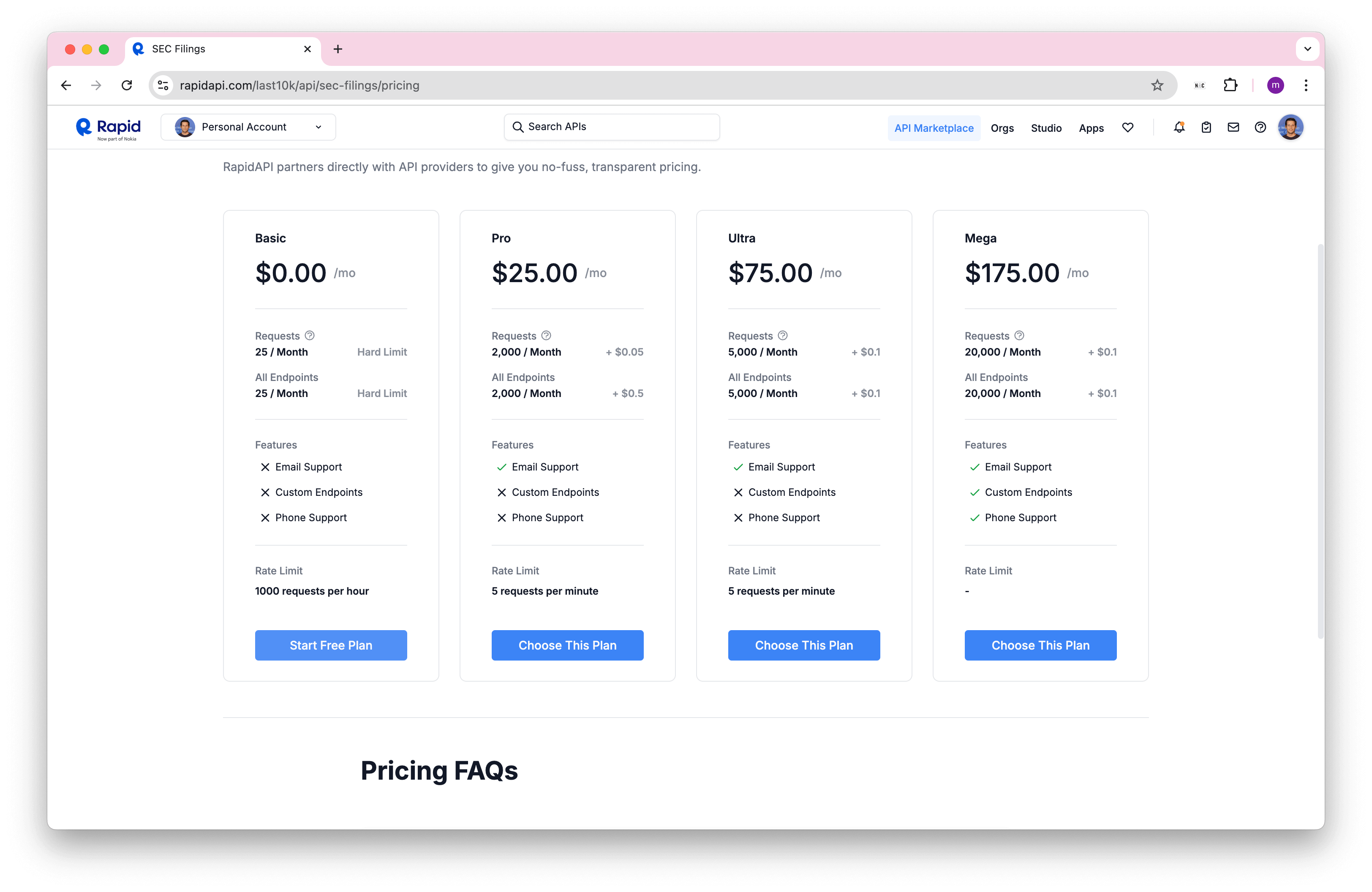
Note that whichever plan you choose (even the free one), you'll need to enter your credit card details at this point.
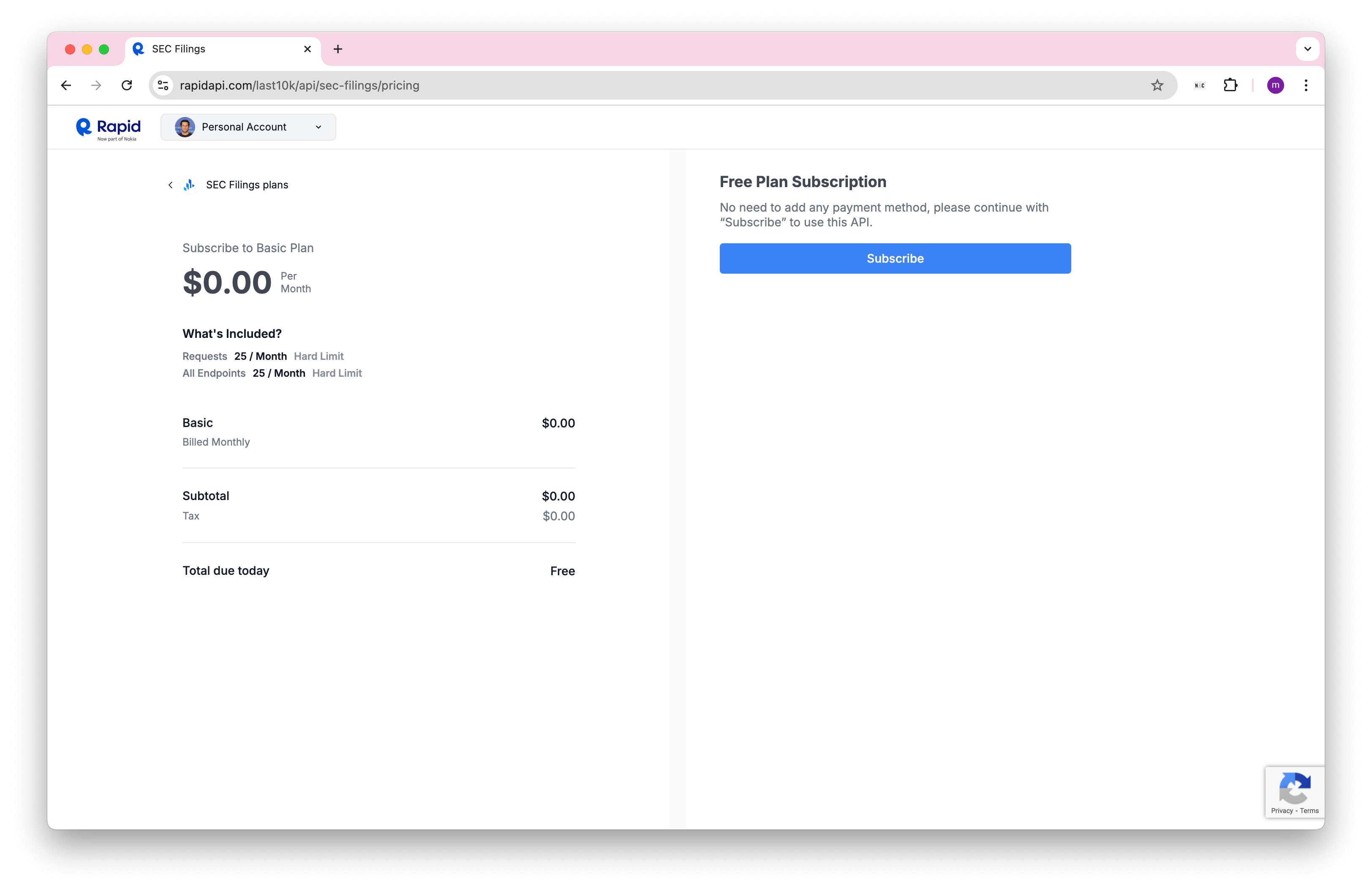
Explore API Endpoints
Each API offers multiple endpoints. For example, the SEC Filings API has an endpoint for balance sheets. Review the list of endpoints in the left panel.
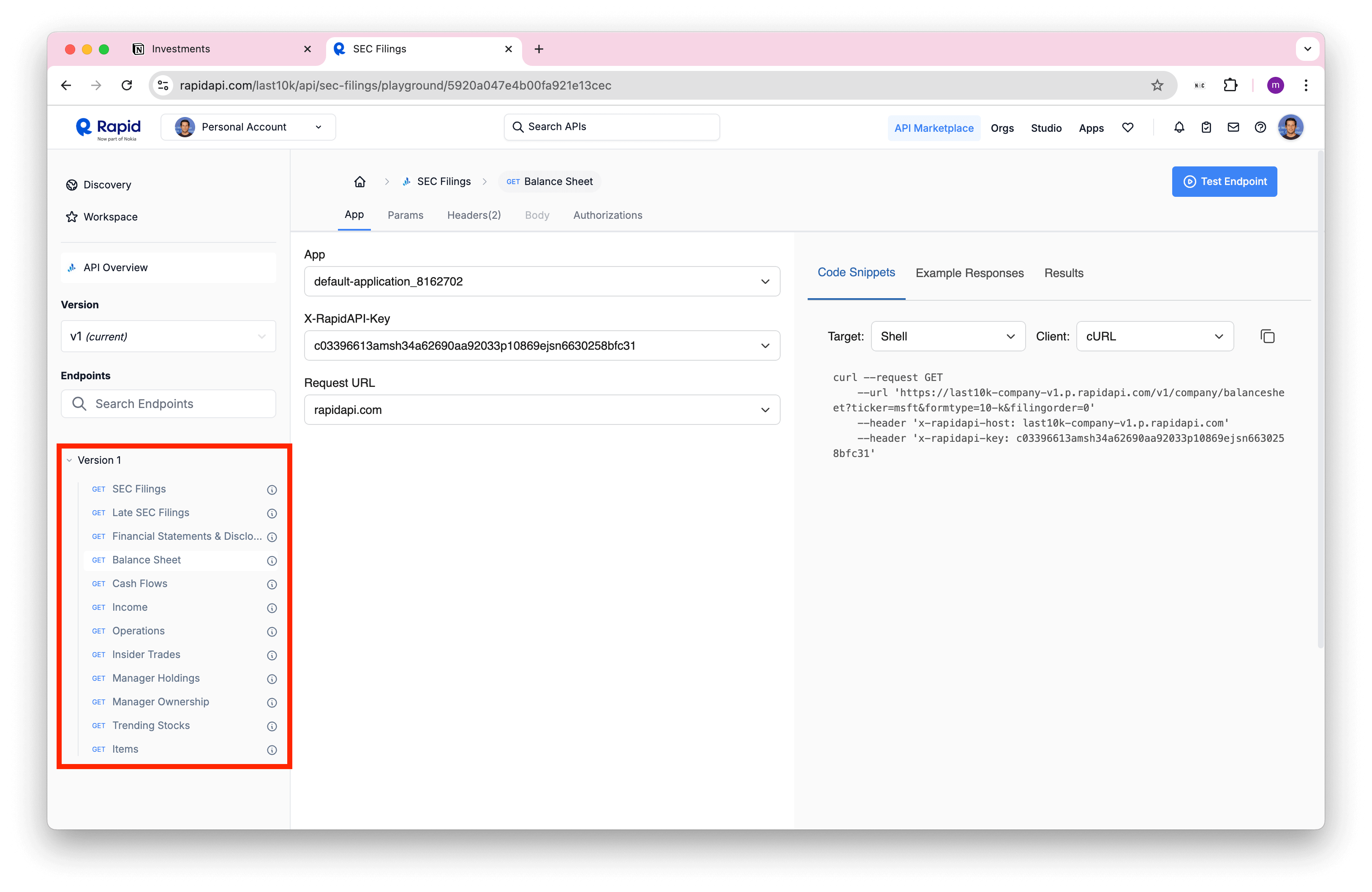
Open the endpoint documentation to understand the parameters required.
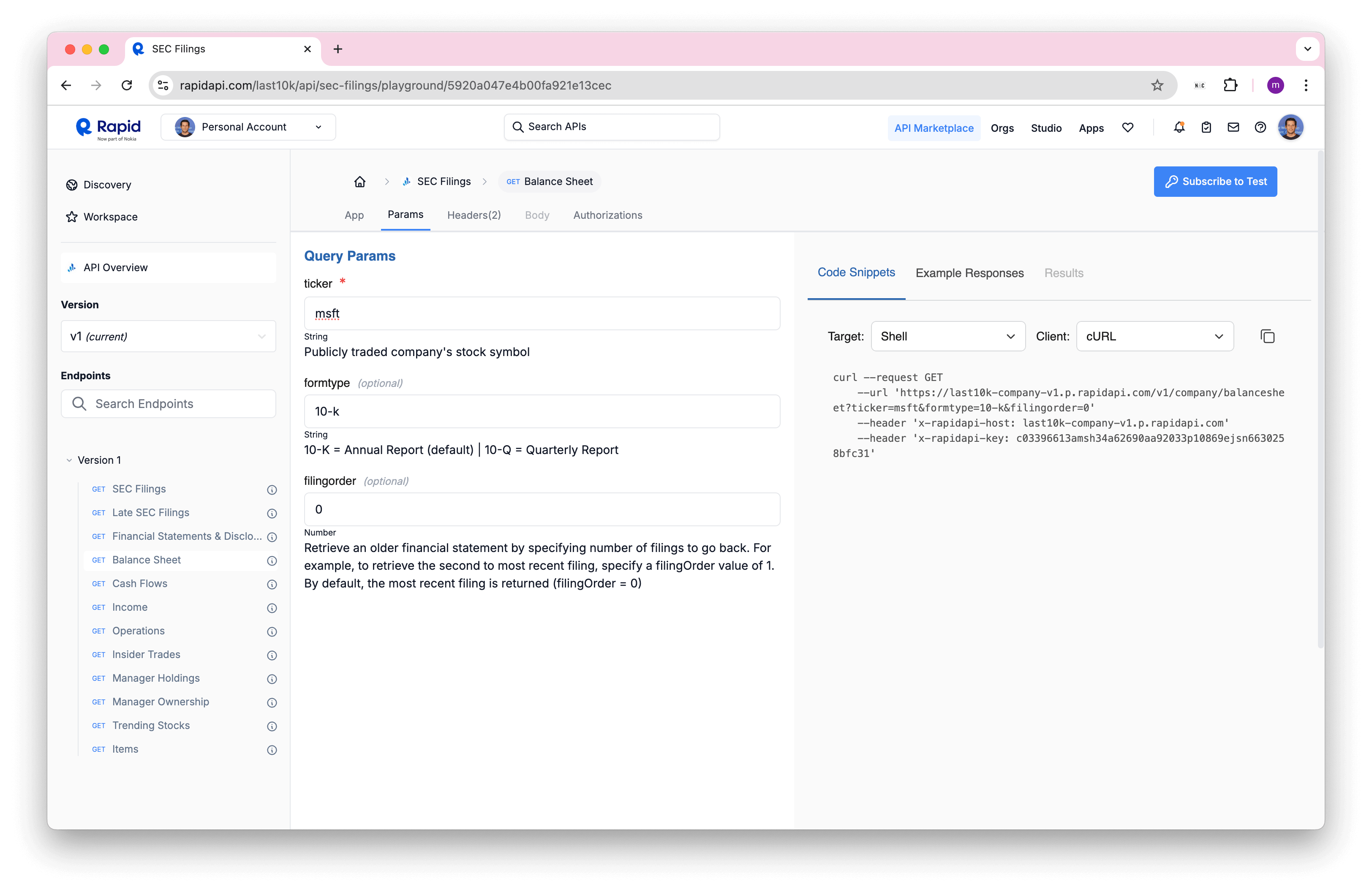
Now, I can subscribe to API and test it out. Use the built-in RapidAPI console to test the API.
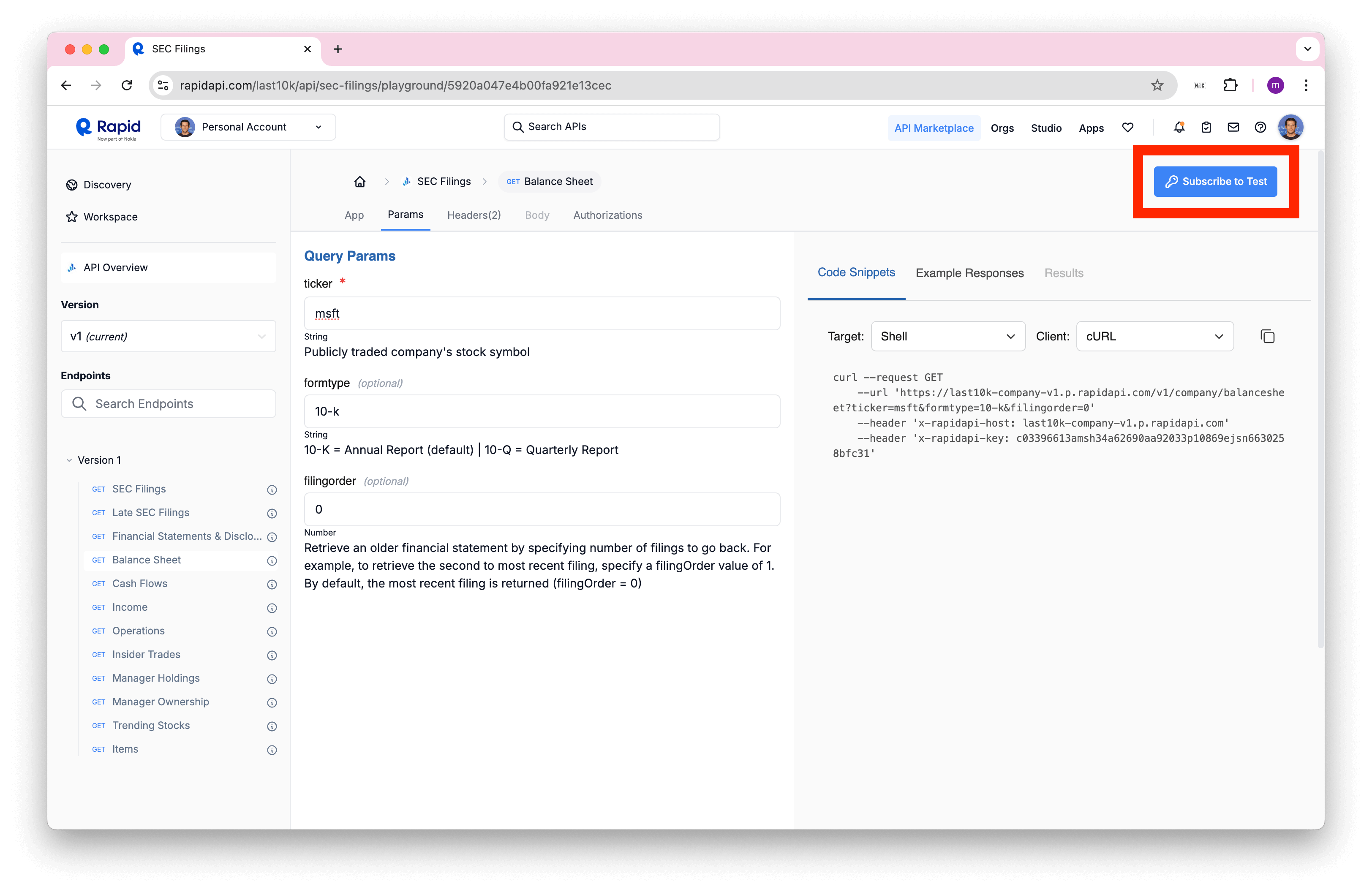
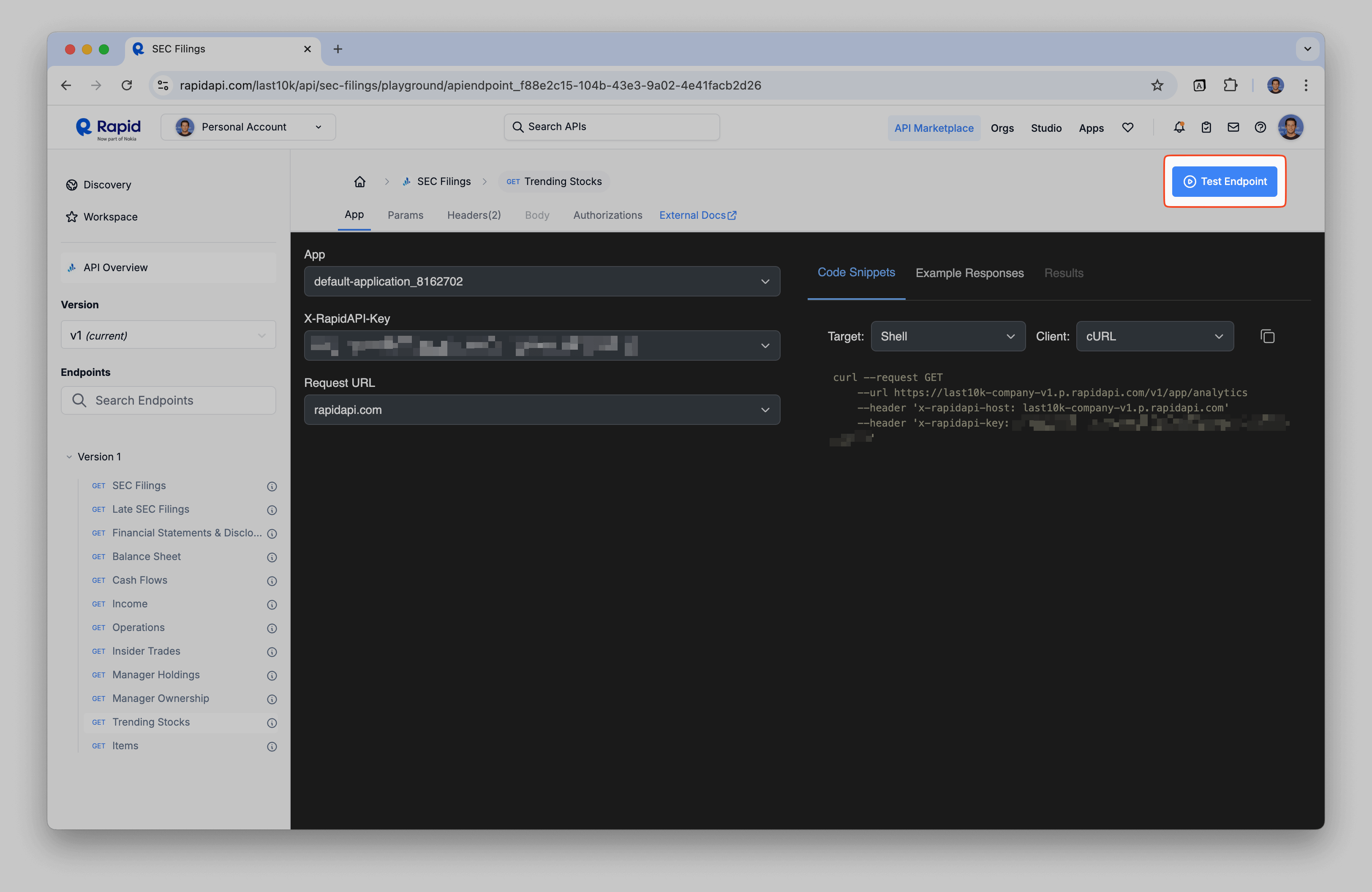
Getting started with Note API Connector
Start syncing your data to Notion in just a few clicks. Connect your Notion workspace, grant the necessary permissions, and you’re ready to create powerful API-based automations, no coding required.
👉 Follow the official setup guide to get started in minutes.
Use the Rapid API in Note API Connector
Once you confirm it works, move to the next step. Paste the API url and its headers from RapidAPI. This includes any required authentication keys or parameters.
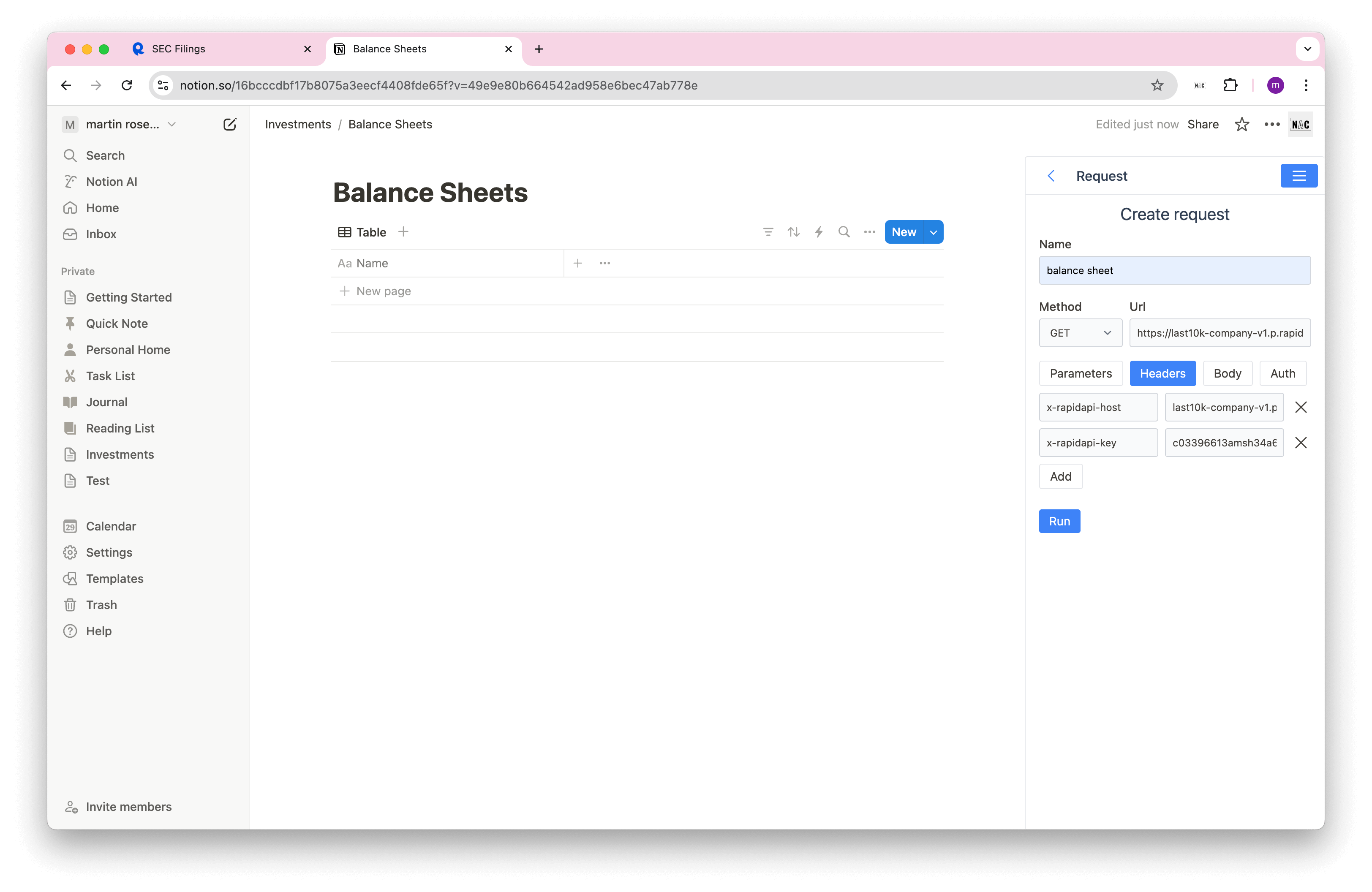
You can paste cURL command to automatically set request parameters. 👇
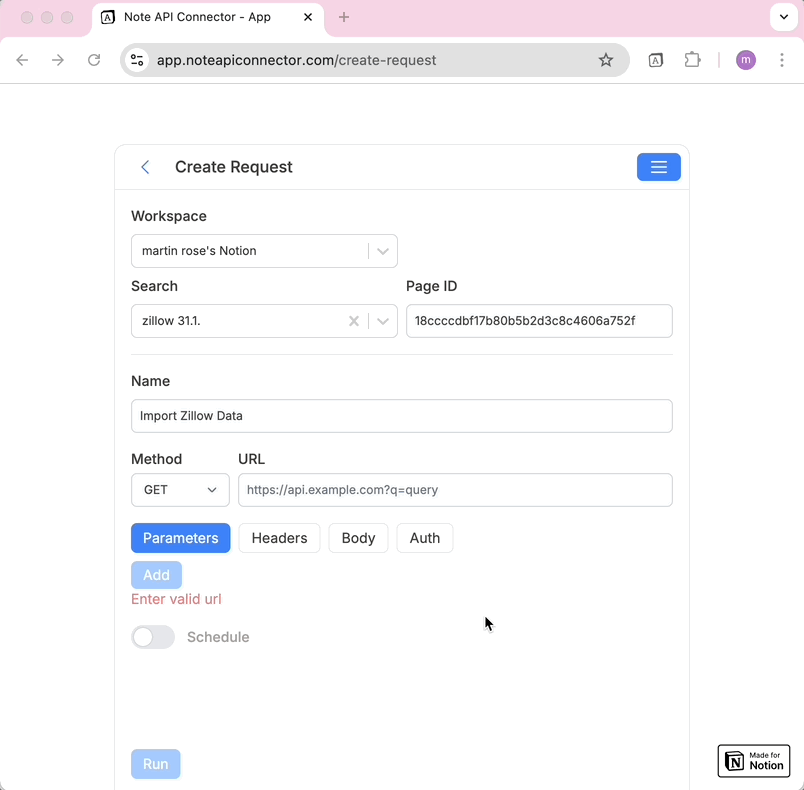
After running the request, the Note API Connector will display the API response . Use the mapping feature to link API fields to your Notion database columns. You can choose to import all fields or only specific ones. For this tutorial, I selected the default fields and imported all the data.
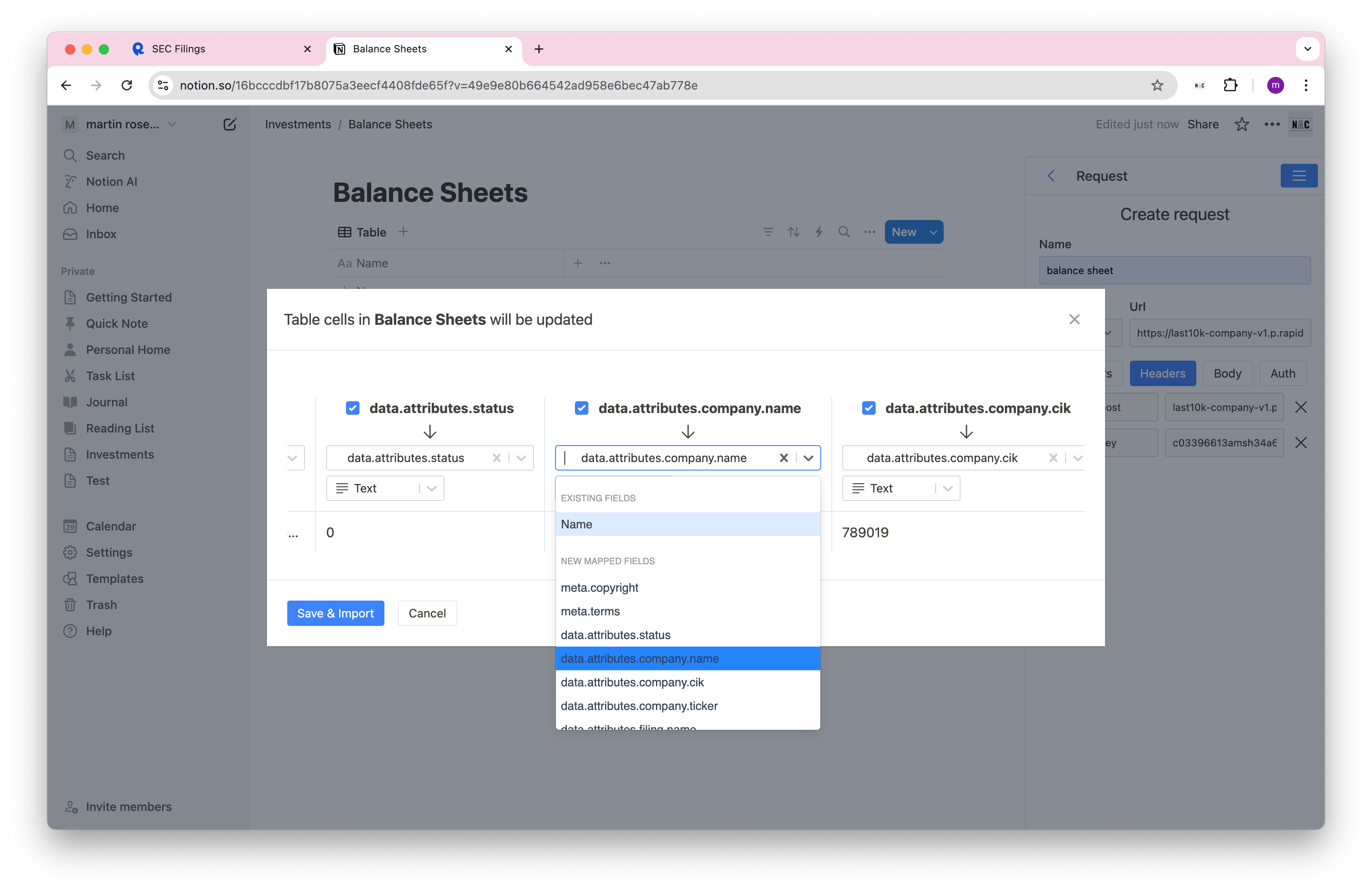
Once the data is imported, you’ll see it organized neatly in your Notion database. This data can now be used for analysis, reporting, or creating dashboards.
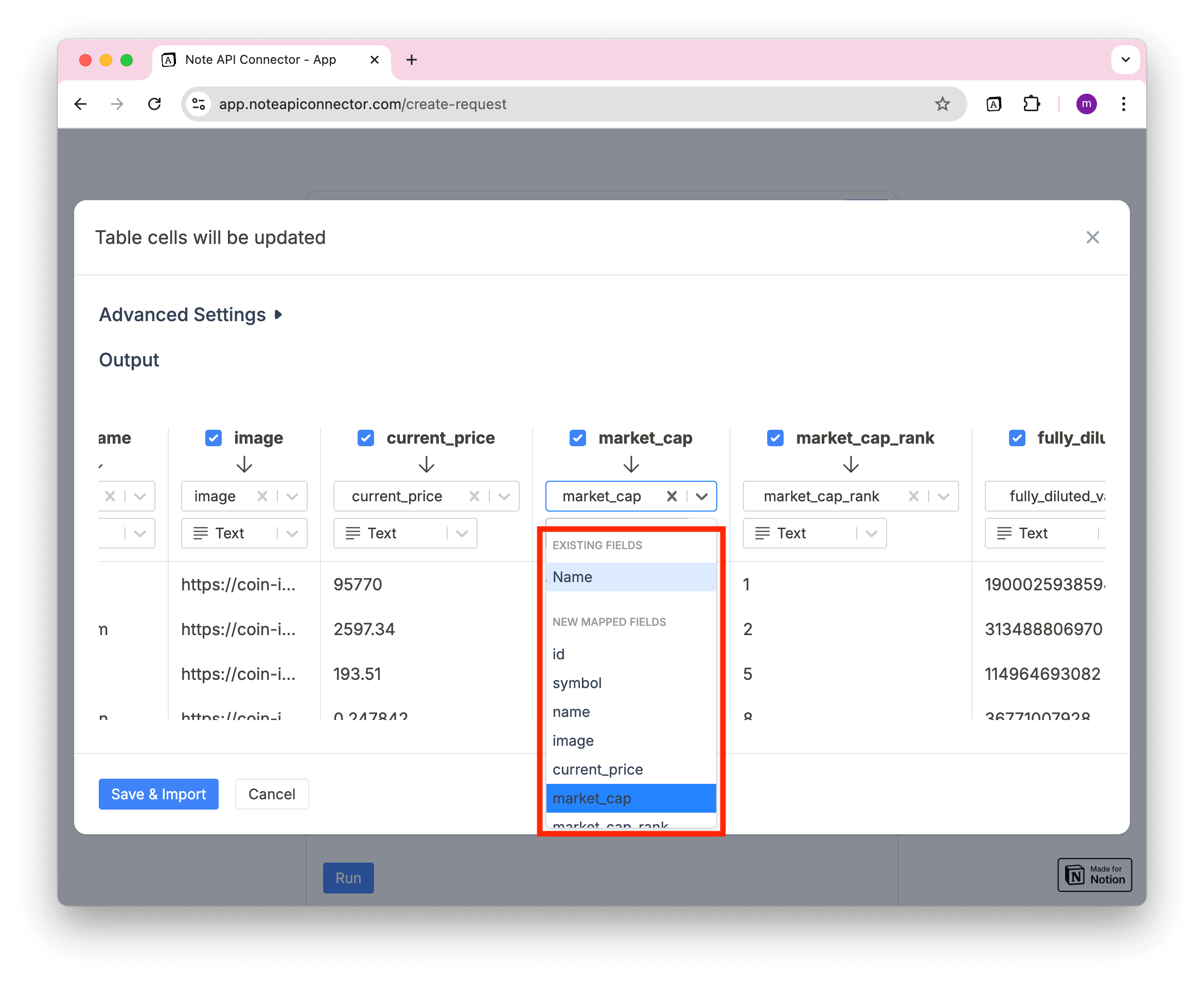
Conclusion
With the Note API Connector and RapidAPI, importing API data into Notion is simple, powerful, and versatile. Whether you're managing financial records, analyzing business metrics, or creating dynamic dashboards, this integration opens up endless possibilities for automating workflows and enriching your Notion workspace.
Try connecting your favorite API and bring your Notion workspace to life with real-time data. Install the Note API Connector today and start exploring the world of API integrations.
Frequently Asked Questions
RapidAPI is the world’s largest API marketplace, offering access to thousands of APIs across categories like finance, sports, and utilities. Using it with Notion via Note API Connector lets you pull real-time data into your workspace, enhancing productivity and organization.
To connect RapidAPI to Notion:
- Sign up for a RapidAPI account and find your desired API.
- Copy the API’s cURL command.
- Open Note API Connector, paste the command into the URL field, and run the request.
- Map the API response fields to your Notion database and import. Check our tutorial for detailed steps.
Importing API data into Notion centralizes information, eliminates manual data entry, and enables real-time updates. This streamlines workflows for project management, data analysis, or team collaboration, all within your Notion workspace.
Yes, Note API Connector works with any API that provides a valid endpoint, not just RapidAPI. As long as you have the API URL and necessary credentials, you can import data into Notion seamlessly.
No coding skills are required. Note API Connector is a user-friendly, no-code solution that simplifies importing API data into Notion. Simply paste your API request (e.g., a cURL command from RapidAPI), map the fields, and import the data.
